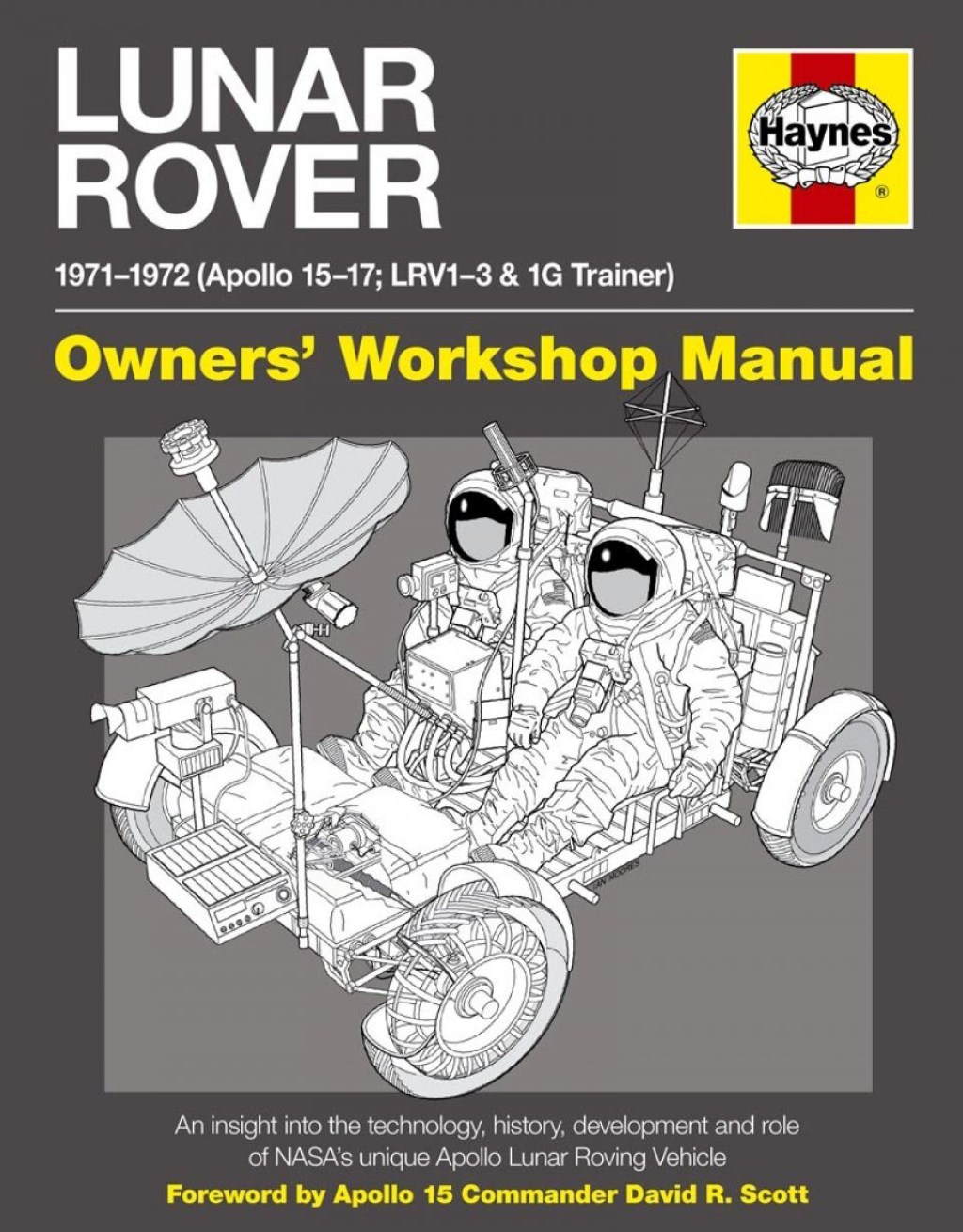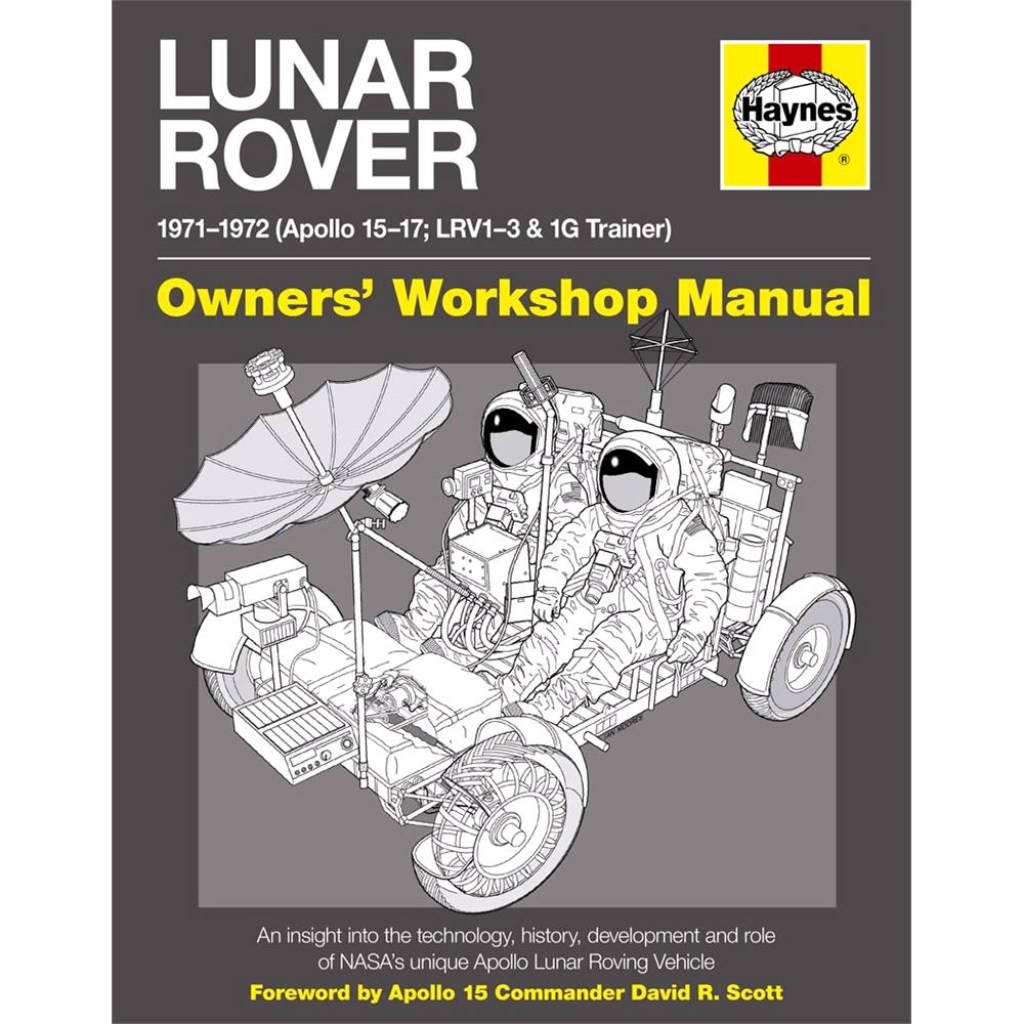The Complete Lunar Rover Manual For 1971-1972 Apollo Missions: LRV1-3, LRV 1G Trainer, And More!
Exploring the Lunar Rover Manual 1971-1972 Apollo 15-17 LRV1-3 and 1G Trainer
Brief Introduction
As a product reviewer and a space enthusiast, I have had the pleasure of exploring the Lunar Rover Manual 1971-1972 Apollo 15-17 LRV1-3 and 1G Trainer. The manual is a comprehensive guide that provides detailed information on the lunar rover and its functions. It is a must-have for anyone interested in the history of space exploration and the technology that made it possible.
Overview
The Lunar Rover Manual 1971-1972 Apollo 15-17 LRV1-3 and 1G Trainer is a guidebook that provides information on the lunar rover used during the Apollo missions. The rover was a critical component of the space program and allowed astronauts to explore the surface of the moon. The manual provides detailed information on the functions and features of the lunar rover, including its controls, instruments, and technical specifications.
3 Picture Gallery: The Complete Lunar Rover Manual For 1971-1972 Apollo Missions: LRV1-3, LRV 1G Trainer, And More!



Brand
The Lunar Rover Manual 1971-1972 Apollo 15-17 LRV1-3 and 1G Trainer is an official publication of the National Aeronautics and Space Administration (NASA). It was compiled by a team of engineers and scientists who worked on the lunar rover project.
History

Image Source: vatera.hu
The lunar rover was developed in the 1960s and 70s as part of the Apollo program. It was designed to allow astronauts to explore the surface of the moon and conduct scientific experiments. The rover was used during the Apollo 15, 16, and 17 missions and helped to expand our knowledge of the moon and its geology.
What is the Lunar Rover Manual?
The Lunar Rover Manual is a guidebook that provides detailed information on the lunar rover used during the Apollo missions. It covers topics such as the rover’s controls, instruments, and technical specifications. It is an essential resource for anyone interested in the history of space exploration and the technology that made it possible.
Who is the Lunar Rover Manual for?
The Lunar Rover Manual is for anyone interested in the history of space exploration and the technology that made it possible. It is also useful for engineers, scientists, and students who are studying space technology and the Apollo program.
When was the Lunar Rover Manual published?

Image Source: nhbs.com
The Lunar Rover Manual was published in 1971 and 1972, during the Apollo 15, 16, and 17 missions.
Where can I find the Lunar Rover Manual?
The Lunar Rover Manual is available online on the NASA website and other online resources. It can also be found in libraries and archives that specialize in space technology and history.
Why is the Lunar Rover Manual important?
The Lunar Rover Manual is important because it provides a comprehensive guide to the lunar rover used during the Apollo missions. It is a valuable resource for anyone interested in the history of space exploration and the technology that made it possible.
How can I use the Lunar Rover Manual?

Image Source: micksgarage.com
The Lunar Rover Manual can be used as a reference guide for anyone interested in the lunar rover and its functions. It can also be used as a resource for engineers, scientists, and students who are studying space technology and the Apollo program.
FAQ
What is the lunar rover?
The lunar rover is a vehicle used to explore the surface of the moon during the Apollo missions.
What was the purpose of the lunar rover?
The purpose of the lunar rover was to allow astronauts to explore the surface of the moon and conduct scientific experiments.
How was the lunar rover powered?
The lunar rover was powered by two silver-zinc batteries that provided a total of 1500 watt-hours of energy.
How fast could the lunar rover travel?
The lunar rover had a top speed of 8.2 miles per hour (13.2 kilometers per hour).
How many lunar rovers were used during the Apollo missions?
Three lunar rovers were used during the Apollo 15, 16, and 17 missions.
Model and System
Model
The Lunar Rover Manual provides detailed information on the three lunar rover models used during the Apollo missions: LRV1, LRV2, and LRV3. The rovers were built by the Boeing Company and cost approximately $38 million to develop.
System
The lunar rover was a four-wheeled vehicle that was driven by an electric motor. It was powered by two silver-zinc batteries that provided a total of 1500 watt-hours of energy. The rover had a top speed of 8.2 miles per hour (13.2 kilometers per hour) and could travel up to 57 miles (92 kilometers) on a single charge.
Seating Capacity and Features
Seating Capacity
The lunar rover had two seats for the astronauts. The seats were made of mesh material and had shoulder harnesses to keep the astronauts in place during bumpy rides.
Features
The lunar rover was equipped with a range of features that allowed astronauts to explore the surface of the moon. It had a television camera that provided live video footage back to Earth, a scientific equipment bay that could hold up to 150 pounds (68 kilograms) of equipment, and a navigation system that allowed astronauts to track their location on the moon.
Controls and Instruments
Controls
The Lunar Rover Manual provides detailed information on the lunar rover’s controls, including the steering, braking, and acceleration systems. The rover was controlled by a joystick and had two foot pedals for braking and acceleration.
Instruments
The lunar rover was equipped with a range of instruments that allowed astronauts to conduct scientific experiments. It had a core drill for collecting rock samples, a soil mechanics tool for measuring the properties of lunar soil, and a radiation detector for measuring radiation levels on the moon.
Interior and Instructions
Interior
The interior of the lunar rover was designed to be as comfortable as possible for the astronauts. It had two seats made of mesh material and a range of features and instruments that allowed astronauts to explore the surface of the moon.
Instructions
The Lunar Rover Manual provides detailed instructions on how to operate the lunar rover, including how to start and stop the vehicle, how to steer and brake, and how to use the various instruments and features.
Service, Repair, and Facilitates
Service
The lunar rover was designed to be as reliable as possible, but it still required regular maintenance and service. The Lunar Rover Manual provides detailed information on how to service and maintain the vehicle, including how to replace the batteries and how to repair the steering and braking systems.
Repair
In the event of a breakdown or malfunction, the Lunar Rover Manual provides detailed information on how to repair the vehicle. It includes troubleshooting guides and step-by-step instructions for repairing various components of the rover.
Facilitates
The lunar rover was designed with a range of features that facilitated the astronauts’ exploration of the moon. It had a range of instruments and features that allowed astronauts to conduct scientific experiments and collect rock samples.
Accessibility and Technologies
Accessibility
The lunar rover was designed to be as accessible as possible for the astronauts. It had two seats and a range of features and instruments that allowed astronauts to explore the surface of the moon.
Technologies
The lunar rover was equipped with a range of technologies that allowed astronauts to explore the moon. It had a television camera that provided live video footage back to Earth, a scientific equipment bay for collecting rock samples, and a navigation system that allowed astronauts to track their location on the moon.
Functions and Benefits
Functions
The lunar rover was designed to allow astronauts to explore the surface of the moon and conduct scientific experiments. It had a range of functions and features that facilitated this exploration, including a television camera, a scientific equipment bay, and a navigation system.
Benefits
The lunar rover allowed astronauts to explore the surface of the moon and conduct scientific experiments that expanded our knowledge of the moon and its geology. It was a critical component of the Apollo program and helped to pave the way for future space exploration.
Specifications and Capabilities
Specifications
The lunar rover had a range of specifications, including its length, width, and weight. It was designed to be as lightweight as possible, while still being sturdy enough to handle the rough terrain of the moon.
Capabilities
The lunar rover was capable of traveling up to 8.2 miles per hour (13.2 kilometers per hour) and could travel up to 57 miles (92 kilometers) on a single charge. It could also carry up to 150 pounds (68 kilograms) of scientific equipment and rock samples.
Safety and Instruments
Safety
The lunar rover was designed with safety in mind. It had a range of safety features, including shoulder harnesses for
This post topic: Manual



